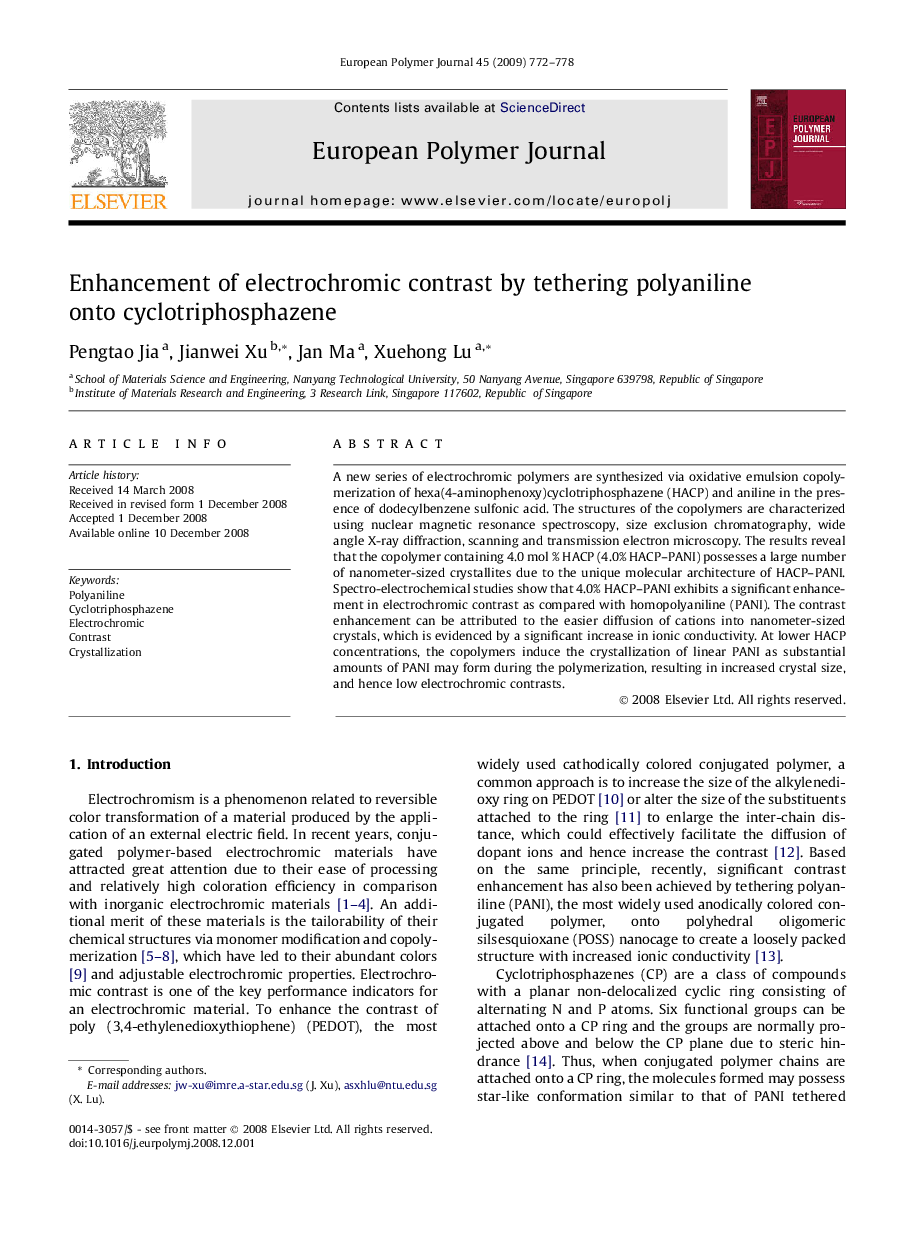| کد مقاله | کد نشریه | سال انتشار | مقاله انگلیسی | نسخه تمام متن |
|---|---|---|---|---|
| 1402815 | 984787 | 2009 | 7 صفحه PDF | دانلود رایگان |

A new series of electrochromic polymers are synthesized via oxidative emulsion copolymerization of hexa(4-aminophenoxy)cyclotriphosphazene (HACP) and aniline in the presence of dodecylbenzene sulfonic acid. The structures of the copolymers are characterized using nuclear magnetic resonance spectroscopy, size exclusion chromatography, wide angle X-ray diffraction, scanning and transmission electron microscopy. The results reveal that the copolymer containing 4.0 mol % HACP (4.0% HACP–PANI) possesses a large number of nanometer-sized crystallites due to the unique molecular architecture of HACP–PANI. Spectro-electrochemical studies show that 4.0% HACP–PANI exhibits a significant enhancement in electrochromic contrast as compared with homopolyaniline (PANI). The contrast enhancement can be attributed to the easier diffusion of cations into nanometer-sized crystals, which is evidenced by a significant increase in ionic conductivity. At lower HACP concentrations, the copolymers induce the crystallization of linear PANI as substantial amounts of PANI may form during the polymerization, resulting in increased crystal size, and hence low electrochromic contrasts.
Journal: European Polymer Journal - Volume 45, Issue 3, March 2009, Pages 772–778